

The Chiropractic Drop Table Technique or Thompson technique was developed by Dr Thompson DC in the 1950’s & 60’s. It involves specific points of contacts on the pelvis or spine being applied while the table below has a drop piece set up. A force is applied as the drop table falls suddenly. The physics of every action having an equal and opposite reaction is used here. Once the table falls and stops the bone is moved and manipulated into the correct position. This is a very good technique for slight-therapists that have a large patient to treat. This technique can generate up to ten times more force than standard manipulation. This technique is very useful to treat the pelvis and lumbar spine in the prone or side lying position.
The APBC Drop table technique will teach methods for the full Spine and Pelvis in an introduction of only 1 hour at locations with a drop table
Chiropractic Electric Hydraulic Drop Table
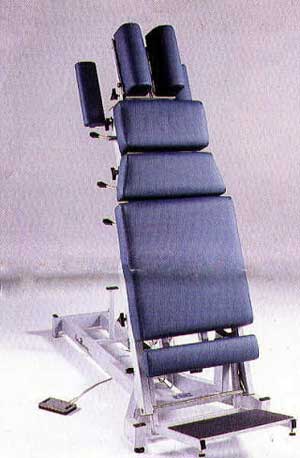
Adjuster pro similar to an Activator manipulation tool.


APBC Mechanical manipulation technique. We use a metal hand held device that delivers a quick short-lever thrust into an area to move gap a joint or correct a bone subluxation-somatic dysfunction. We use an Adjuster Pro from the UK, or J Tech EX not an Activator. We don’t teach Activator methods or technique. we teach our own methods of APBC analysis and correction. The thrust is 1000 times faster than human hand, over 100 Miles per hour. However, it does not hurt. It’s fast but not forceful!
This mechanical method of manipulation o is a whole body approach and is used for geriatric patients, children and people who dislike the force of the manual manipulation techniques. The method can also be used on areas of pathological weakness like Osteoporosis, unlike other manipulation technique. The APBC Adjuster Pro or J Tech EX manipulation techniques are safe, and not forceful. We will teach the full Spine and Pelvis with this instrument. This system involves a complex involves a complex neurological leg length or Applied kinesiology analysis in prone or supine with shoes removed.
We back up our subjective assessment with EMG computer studies via a PC and peer reviewed published papers from PhD’s.
WHAT IS APBC protocol ?
APBC uses 7 key steps to finding subluxaton or misalignments. (We don’t use X-rays to find subluxation, only use X-ray if suspected pathology)
- APBC Visualising any obvious asymmetries
- APBC static and motion Palpation in standing, prone and supine
- APBC scientific neurological leg length testing.
- APBC neurological Applied Kinesiology with EMG via a PC
- APBC Fascial testing for finding subluxation
- We also use a nervo-scope ETS 9A to detect heat from subluxations or misalignment.
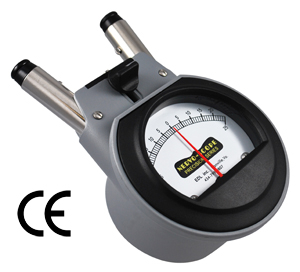
- Wagner Pain TestTM – Model FPIX Digital Algometer a Digital pressure device to give accurate pressure-pain readings for APBC subluxation or misalignments.

In the 5-day APBC Certificate in Manipulation Therapy Program – part 1, you will be taught how to examine with static & motion palpation, the cervical, thoracic, lumbar spine and pelvis. Using new APBC neurological tests, that will give you clear information. Then you can formulate a differential diagnosis to give an effective treatment plan.
In the Certificate Program in Manipulative Therapy you will learn:
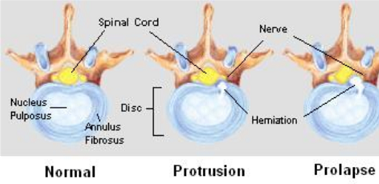
How to quickly identify spinal pathology and give an effective treatment & rehabilitation plan
- Differential Diagnosis
- Cervical disc prolapse, Thoracic disc prolapse and Lumbar disc prolapse
- Cervical, Thoracic, Lumbar facet pain
- Muscle strain
- DJD : Degenerative joint disease
- Dislocation
- Subluxation
- Somatic dysfunction
- Fractures
- Ligament injury
- Scoliosis : Congenital, Structural or Postural
- Lumbar facet syndrome
- Prolapsed lumbar disc
- Annular tear
- Nerve root impingement or entrapment
- Central Stenosis
- Lateral Stenosis
- Claudication vascular v Neurological
- Piriformis syndrome
- SI joint dysfunction
- Peroneal nerve entrapment
Upper Limb Referral Differential Diagnosis:
- Comprehensive assessment taught.
- Thoracic outlet syndrome
- Carpal tunnel syndrome
- Pronator Teres syndrome
- Disc prolapse
- Lateral stenosis
- Central stenosis
- Fracture
- Infection
- Facet capsular impingement
- SOL space occupying lesion
- Nerve root impingement entrapment
- Rotator cuff
- Visceral somatic
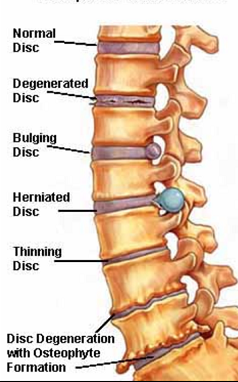
Effective treatment for complicated spinal & SI J Issues, with new assessment techniques and specific manipulation or adjustments, learn how to manage chronic spinal pathologies with ease.
Full modified osteopathic Chiropractic case history explored and taught in our APBC technique.
Visceral somatic reflexes & somato visceral reflexes explained. The Heart, Lungs and Internal organ can refer pain to the spine via the nervous system causing a visceral somatic reflex. This is a medical scientific fact. A lecture will take place about this very interesting topic and fully explain the pathophysiology and neurophysiology of visceral-somatic dysfunction and somato-visceral reflex from subluxation.
Further discussion will take place on subluxation degeneraton theory, including the following causes of subluxation stress, micro-trauma, macro-trauma, emotional stress and chemical imbalances.
APBC techniques taught During the Course are:
APBC HVT short-lever thrusts for pelvic girdle and full spine.
Each technique Class will involve more than 90% of hand-on practice with modified techniques from Osteopathy and Chiropractic and Physiotherapy. Taught as our APBC Advanced Postural Biomechanical Correction Technique.
The techniques taught will be:
- APBCShort-Lever full spine and SI J, pubic & Coccyx manipulations similar to some styles of Chiropractic.
- APBC Drop Table Method similar to the Thompson method, but more comprehensive.
- APBCAdjuster pro or J Tech Ex Mechanical Adjustments similar to an Activator instrument.
- APBCPro Technique. The adjuster Pro is a hand-held instrument made in the UK.
- APBCHigh Velocity Thrust Methods Grade 5 techniques.
- APBCOsteopathic Articulation Methods
- APBCOsteopathic Soft Tissue Methods to integrate manipulation into a treatment plan
- APBCSpecific Physiotherapy Rehabilitation for the spine and pelvis

The Adjuster pro instrument is similar to an Activator brand, which is an hand-held mechanical manipulation tool. The Adjuster pro delivers a specific thrust 1000 times faster than the human hand. It’s is great for joint restrictions, vertebral, pelvic misalignment and trigger points. It is excellent for paediatric, geriatric use, safe for areas of areas of pathological weakness. Like osteoporosis. Designed in the UK with an 12 month guarantee, ergonomically designed for comfort.
APBC Manipulation techniques taught in our program.
Ilium-sacral Subluxaion
- PI Ilium
- AS Ilium
- EX Ilium
- IN Ilium
Globally twisted rib-cage
- APBC technique for a globally twisted rib-cage
Sacro-iliac subluxation:
- Base Posterior Sacrum
- Base Anterior Sacrum
- Posterior left Sacrum
- Posterior right Sacrum
- Left or Right Anterior-Inferior Sacral Base
- Left or Right Posterior-Superior Sacral Base
Coccyx Subluxations:
- lateral left or right Coccyx
Lumbar Subluxations:
- L5-L1 Process left or right PR or PL
Thoracic subluxations:
- T12-T1 process left or right PL or PR
Occipital subluxations.
- Posterior and anterior Occipital bone,
- Unilateral Inferior occipital bone,
- Bilateral Inferior occipital bone,
- bilateral anterior-superior occiput.
- Unilateral posterior occiput,
- Bilateral posterior occiput,
Cervical spine subluxations:
• C7-C2 process left or right PL or PR
• Atlas laterality left or right

Dr Robbie Goodrum Teaching the Sport-Physiotherapists at Everton Football club in the UK and Physiotherapists from New castle and Manchester United Football Clubs.
The Course is designed for Physiotherapists, Osteopaths, Chiropractors, Sports Therapists & medical sports Doctors.
Contact Robbie on apbc-technique@outlook.com
UK Mobile Thai mobile +66 887586109
This course runs over 5 straight days. The seminar comes with a course manual our APBC Advanced postural Biomechanical Correction, including a clear photo for each method with a detailed description.
Course fee: see dates of programs.
Click here Goodrum Seminar Dates
This course is for professionals only. Taught at post graduate to expert in muscular clinical skeletal studies.
Our APBC SI J and spinal course is currently 2 x 5 day seminars increasing to 3 x 5 day seminars in October 2016. The reasons is more techniques added and time needed to practice.
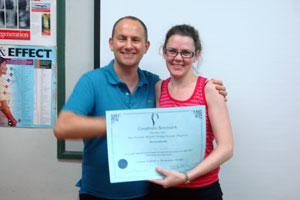
Amanda physiotherapist from Australia
